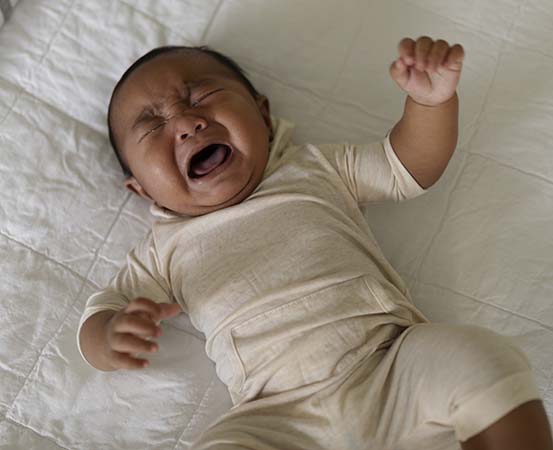
The clavicle, also called the collarbone, is the area between the shoulder blades and the breastbone. It is crucial to keep the shoulder joint stable, and any fracture in the clavicle hampers shoulder movement. Clavicle fracture incidents occur in newborns due to difficulties during delivery.
What causes clavicle fractures in newborns?
The two common reasons that could lead to a clavicle fracture in newborns during delivery are maternal pelvic anatomy (the structure of the female pelvis, which is essential for supporting pregnancy, labor, and childbirth) and the size of the newborn.
“If the mother’s pelvis is not conducive for birthing [because it is smaller than average or has anatomical variations], it can lead to difficulties in delivery. This may lead to clavicle fracture in the baby,” says Dr Bharath N, junior consultant, neonatology, DHEE Hospitals, Bengaluru. “Likewise, if the baby is larger or heavier than average, it leads to challenges in the delivery and the baby might be predisposed to clavicle fracture.” Besides, if the baby is handled forcefully or in a way that they should not be during delivery, it can lead to clavicle fracture.
“Excessive stretching of the shoulder away from the head can also cause clavicular fracture,” shares Dr Bharath.
A breech birth (where the baby emerges out of the birth canal with its feet or buttocks first, as opposed to the head) can also be the reason for clavicular fractures in newborns.
Complications from neonatal clavicle fracture
Babies who endure clavicle fractures usually recover completely as newborns have greater bone regeneration ability. But in rare cases, a collarbone fracture can result in neural damage, like brachial plexus injury. Dr Bharath explains, “Brachial plexus is a nerve situated below the clavicle nerve bundle, controlling the arm and hand.”.
A clavicular fracture has no long-term effects unless it is a complicated fracture. You can solve the issue with timely medical intervention and treatment. But in the case of neural damage, as seen in a brachial plexus injury, some weakness may persist.
Treatment for clavicle fracture
Doctors usually check for a clavicle fracture following a challenging birth by palpating the baby’s collarbone on both sides and checking for any bone discontinuity. However, in some cases, it is identified later by taking note of tell-tale symptoms. “A history of limited hand movements or the baby crying when you touch that part of the hand are the common symptoms,” informs Dr Bharath.
When a fracture is suspected, doctors request an x-ray. This helps understand whether a complete fracture or a hairline one has occurred.
“Even the baby’s position during the X-ray procedure matters to identify a clavicle fracture, shares Dr Bharath. “While taking an X-ray, the baby must be held in a specific position so that the fracture is detected. Some positions could falsely reassure that the baby’s clavicle is normal.”
The type of treatment differs depending on how severe the injury is. A minor hairline fracture of the clavicle is treated by immobilizing the injured limb, even without a splint. But if the injury is complicated and neural damage has occurred, the limb is immobilized using a cast, and the hand is kept abducted. “It is done only in rare cases; the majority of such incidents can be managed just with immobilization without using a splint — keeping the hand adjacent to the body and pinning the cloth on that side in a manner that restricts its movement,” says Dr Bharath.
If a clavicular fracture is diagnosed, parents must take specific safety measures at home during recovery. “They should take precautions while bathing the baby. They should also be careful not to apply pressure over the chest and neck. Stretching the neck away from the side of the clavicle fracture induces pain,” explains Dr Bharath.
Advice to parents
Today, modern technology helps you to know the baby’s size by estimating fetal weight in scans before the delivery. Similarly, an obstetrician can determine by examination whether the pelvis is suitable for a normal birth or not.
“In case they recommend a cesarean delivery by foreseeing difficulties in a normal delivery, don’t opt for vaginal delivery,” recommends Dr Bharath to avoid the possibility of clavicle fractures in newborns.
Takeaways
- The area between the shoulder blades and the breastbone is the clavicle. Clavicle fracture impairs shoulder movement because it is essential for maintaining shoulder joint stability.
- The structure of the mother’s pelvis and the newborn’s size are the two most common factors that can make a neonate more likely to suffer a clavicle fracture during birth.
- Since newborns have better bone regeneration ability, complete recovery from the fracture is possible. However, in rare cases, it can cause nerve damage, such as brachial plexus injury, which may lead to long-term consequences.

















